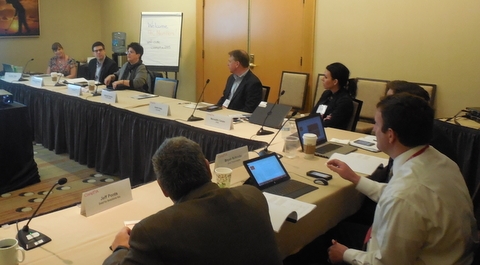 Despite two years of discussions and collaboration between the telecom and IT industries, the two groups are still leaving money on the table. Both own their core audience, but when they attempt to merge service offerings, misperceptions and business model challenges often prevent them for forming a mutual, valued and trustworthy relationship. There’s a real perception problem on both sides, with segments of each community acknowledging the need to reduce the communications gap and work through the issues. In a perfect world, the end result would be increased revenue for all involved and a more comprehensive services portfolio for end customers of all sizes.
Despite two years of discussions and collaboration between the telecom and IT industries, the two groups are still leaving money on the table. Both own their core audience, but when they attempt to merge service offerings, misperceptions and business model challenges often prevent them for forming a mutual, valued and trustworthy relationship. There’s a real perception problem on both sides, with segments of each community acknowledging the need to reduce the communications gap and work through the issues. In a perfect world, the end result would be increased revenue for all involved and a more comprehensive services portfolio for end customers of all sizes.
Solution providers control a tremendous amount of the small- and medium-sized business space, while carriers have a lot of influence over many larger organizations. If the two communities could come together in a much more collaborative fashion, the opportunities will surely grow exponentially. Agents, TEM Providers and master agents have a role to play too.
Regardless of the alliance model your company follows, the CompTIA Telecom Advisory Council (TAC) is trying to improve the value and success of these types of connections. The group consists of executives from a number of carriers and cable providers, master agents and converged partners who collaborate on a variety of industry initiatives each year. Their discussions during CompTIA’s Annual Members Meeting helped move several projects forward, including their plans for a comprehensive telecom channel summit in 2015.
Strengthening, Not Reinventing
The industry already has a number of beneficial events so the TAC plan calls for bringing a Carrier Summit to ChannelCon 2015 to bolster the collaborative discussion and provide an educational path for those wanting to learn more about ways to engage IT partners. With similar missions and synergistic membership bases, the Telecom Channel Association and CompTIA make perfect partners. The TAC believes a combined effort between the organizations will improve communications and expose a wider audience to each community. The TCA will cobrand and help facilitate the event, with a proposed separate breakout for Channel executives.
That’s great news for solution providers looking for more engagement options with the telecom and cable industries. The goal of the combined event is to foster those types of discussions, reducing the barriers to entry and clarifying the myths and mysteries that exist between the communities. Industry executives will discuss the virtues of adding telecom and the risks to partners that don’t offer these business-critical services.
For example, unless a channel partner understands the provisioning process, working with carriers can be a scary proposition. What do solution providers fear the most about working with telco and cable companies? TAC members outlined a few of those concerns at AMM, including the potential loss of account control, unfamiliar regulations, industry language barriers and questions about compensation models.
Valued partnerships between IT and telco companies have to start with a clear understanding of each party’s responsibilities. Who has a stake in which processes, and which organization is the lead? That discussion can get tricky for newcomers, even when following the advice of their peers. The CompTIA Quick Start Guide to Telecom and IT Partnerships and other resources can surely help, but the channel will also benefit from greater discussion.
While a larger telecom discussion at an IT channel event won’t break down all the barriers, it certainly can improve the opportunities. With the combined power of two organizations driving the content, it’s sure to open a few new doors.
Brian Sherman is founder of Tech Success Communications, specializing in editorial content and consulting for the IT channel. His previous roles include chief editor at Business Solutions magazine and senior director of industry alliances with Autotask. Contact Brian at Bsherman@techsuccesscommunications.com.



0